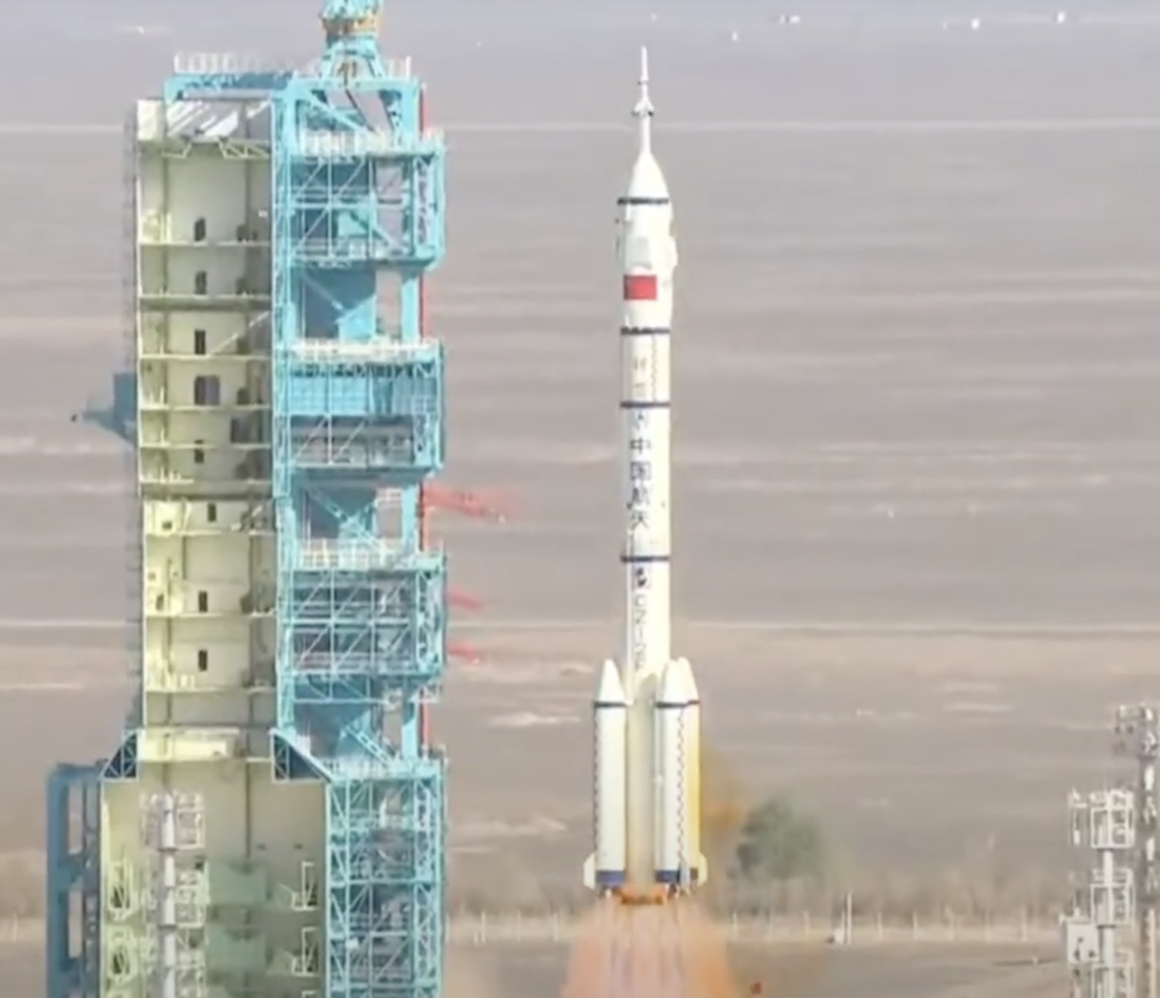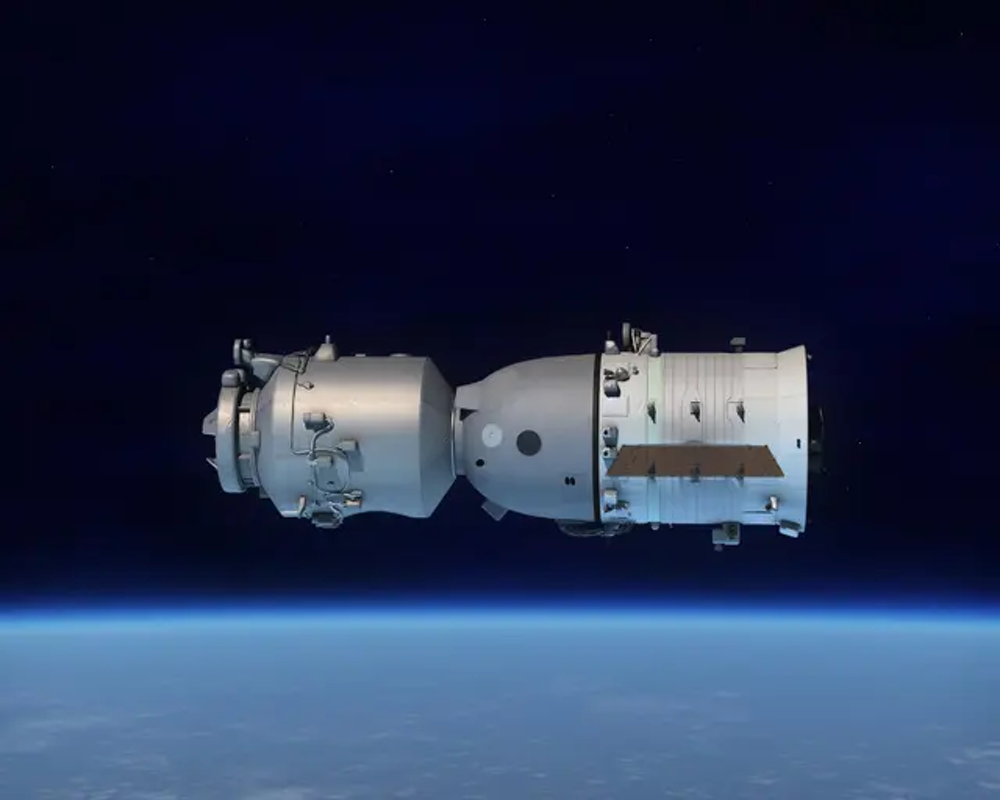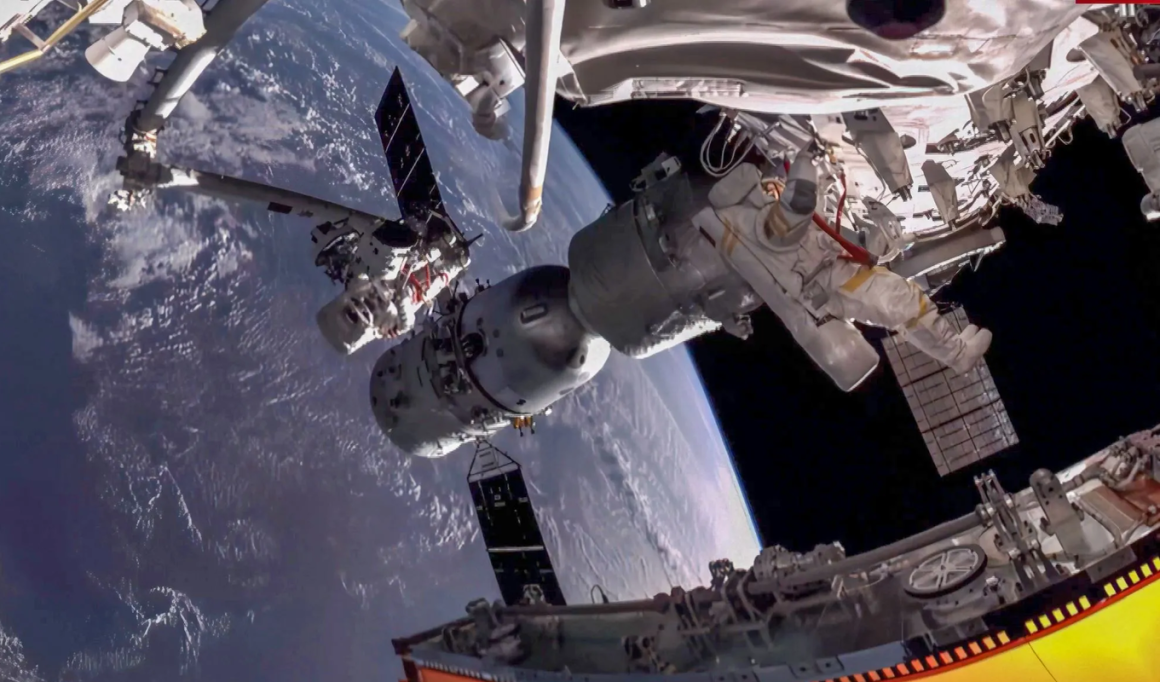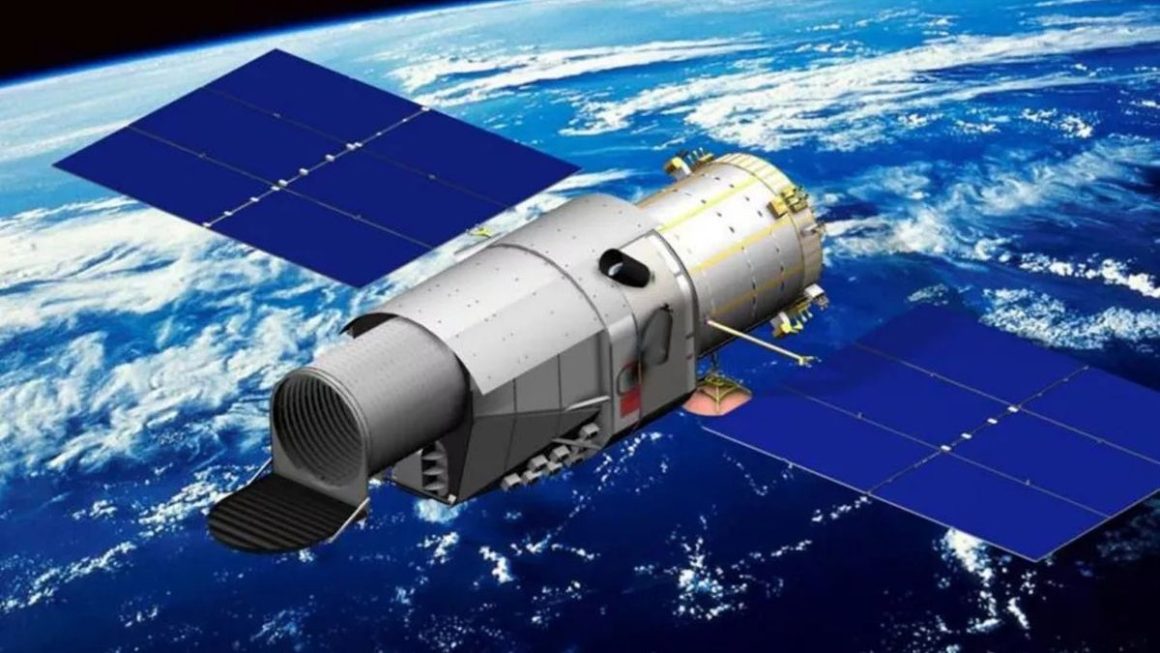On 24 April 2025, China launched a Long March 2F rocket carrying a Shenzhou spacecraft and three astronauts to its Tiangong space station.
The rocket blasted off from the Jiuquan Satellite Launch Center in northern China, located 93 miles from the border with Mongolia.
Successful Launch and Arrival at Space Station
According to astrophysicist Dr. Maggie Liu, the launch was “flawless, as expected,” adding, “This rocket has launched with a 100% success rate since the 90s, so it’s no surprise this is smooth sailing for them.”

Following an approximately 6.5-hour flight, the spacecraft docked with the Tiangong space station. This station orbits the earth between 217 and 280 miles, similar to the 200 – 250 mile range of the International Space Station.

Crew to Remain in Space for Six Months
The crew that just went to space is replacing the current Chinese astronauts, who arrived at the station in October 2024 and have been there for 175 days. They returned to Earth on 30 April 2025, following a brief overlap with the new group. The new crew will live on the station for six months.
While in space, the astronauts will perform spacewalks to perform maintenance, install new equipment, and conduct experiments in new technologies and medical science.
China Space Station Core Module Deployed In 2021
China launched the core “Tianhe” module in April 2021. Located in the center of the station, it provides life support and has crew living quarters. The following year, China launched two additional sections, the Wentian and Mengtian laboratory and experiment modules.

The Wentian module, on the left side of the station, has more living quarters, supplemental life support equipment, and an external system with a robotic arm. The Mengtian module, on the right, has an airlock, which astronauts can use to transfer experiments and equipment in and out of the station.
The first cargo mission to the Tiangong space station, Tianzhou-2, launched on 29 May 2021. Following this, the first crewed mission, carrying three astronauts, launched on 17 June 2021. They stayed in space for three months, testing equipment and preparing the station for future missions.
United States Bans China from International Space Station
In 2011, the United States Congress banned the Chinese from participating in the ISS program, citing security concerns. Referencing a law called the “Wolf Amendment,” Congress blocked NASA from cooperating with the China National Space Administration (CNSA). No Chinese astronaut has visited the ISS. After this, if China wanted to establish a presence in space, they had no choice but to build their own facility.
Tiangong Space Station has Three Modules – For Now
The Tiangong space station, at about 24 tons, has about 20% of the mass of the ISS, which weighs about 400 tons. While it has three modules, the ISS has 16.
The core Tianhe module measures 54 feet in length. It has a docking hub to connect with crew and cargo spacecraft and its robotic arm, which crews use to position the Mengtian and Wentian modules.
Major Expansion Planned In Coming Years
China plans to significantly expand the Tiangong space station in the next few years. The expansion will primarily involve new sections, the next one due to be installed in about four years.
“We will build a 180-ton, six-module assembly in the future,” said Zhang Qiao of the China Academy of Space Technology (CAST).

Part of this will be a multipurpose expansion module with six docking ports. Other full-size sections will then connect to the station. For this expansion, China is developing inflatable modules. They will serve as additional crew living areas and preliminary stages for future missions to the moon. The expansion will also allow more spacecraft to dock at the station simultaneously.
China Developing Its Version of the Hubble Space Telescope
China is also developing a telescope similar to the Hubble Space Telescope. Initial plans are to orbit near the station and dock with it for repairs, maintenance, refueling, and upgrades.

The country also wants to attract international visitors to Tiangong. For example, Pakistan plans to send one of its astronauts on a future Chinese mission. China also hopes to send commercial spacecraft and tourists to the station eventually.
The Tiangong space station is just one part of the Chinese space program. They have explored the far side of the moon, landed a rover on Mars, and want to land a manned mission on the moon before 2030. They have even hinted about a possible future mission to Jupiter.
Total
0
Shares
Credit: avgeekery.com









